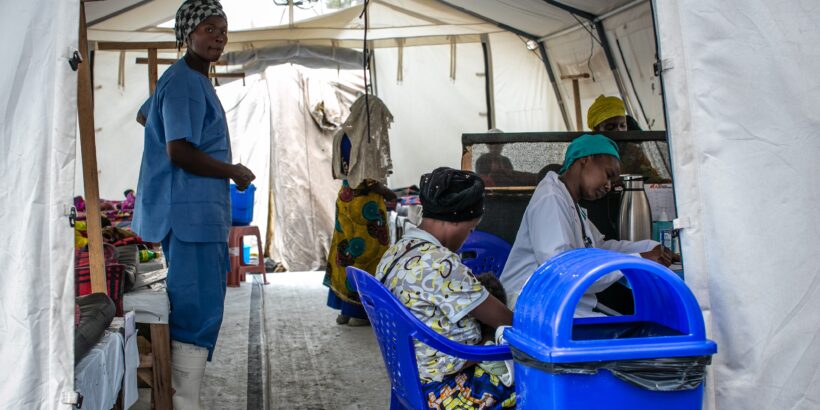Typhoid affects an estimated 9 million people each year, although experts agree this is likely an underestimate due to the difficulties with accurate diagnosis and reporting. Estimating typhoid burden through blood culture—the current gold standard for typhoid diagnosis—is difficult. The amount of blood drawn, previous antibiotic use, and timing of the blood draw all have a significant impact on the accuracy of the blood culture method. The method is also expensive for lower level health facilities, which often lack the skilled personnel to conduct blood cultures. Further, the cultures have modest sensitivity and specificity. In some cases, typhoid symptoms are mild or asymptomatic. Because of the logistical inaccessibility of accurate diagnostics, typhoid cases are underreported, the burden of the disease is underestimated, and outbreaks go unrecognized and underappreciated.
In this context, serosurveillance or serosurvey—a method to test the blood of a selected population in a given period for antibodies to determine whether there is an active or past typhoid infection—can be considered a potential tool to estimate the burden of the disease.
Serosurvey may offer a new approach to typhoid burden estimates
A recent study using sensitive and specific antigens, coupled with new methods of serosurvey, to estimate typhoid burden from antibodies shows promising results. Previous antibiotic use has less impact on this approach, which is a positive benefit when compared to blood cultures. The study proposed to estimate the seroincidence rate to highlight how new infections occur in a population. Data from such a survey can provide an additional indicator of local burden, adding to the data that decision-makers consider during new vaccine introduction deliberations.
The benefits of this type of surveillance are that it requires a fraction of the cost, time, and sample size of blood culture surveillance and may enable more efficient and scalable surveillance for enteric diseases like typhoid. Seroincidence estimates from serosurveys also capture subclinical and mild infections. It uses dried blood spots and requires a small volume of blood. This technique does not require cold chain facilities, which makes it more cost-effective, results in a high number of participants, less selection bias, and ensures equity in surveillance. It may offer a more comprehensive perspective of the local burden as data are not limited to surveillance sites or national laboratories, as can be the case with current data gathering techniques. Serosurveys could more clearly articulate the disease burden for policymakers who have limited or no access to blood culture data.
The use of surveillance is not without challenges, including the difficulty in distinguishing Salmonella Typhi from Salmonella Paratyphi A serovars and identifying reinfections. There are also questions about seasonal influences on the serosurvey approach, but this may be overcome by adjusting enrolled survey participants in a consistent manner throughout a year or by repeating the survey in the same area in high and low typhoid transmission seasons.
Improvement in typhoid surveillance
In countries where typhoid burden is highest, good quality surveillance data is often scarce and incomplete. Improvements in surveillance can help to better understand the typhoid burden, where the risk is at its highest, and when or where outbreaks may be occurring. Additional surveillance data from serosurveys could offer another point of information for policymakers considering typhoid conjugate vaccines (TCVs). While typhoid burden data remains imperfect, another piece of information can be added to the data collection and risk factors analyzed during the decision-making process.
Cover Photo: A health facility in Kwanga, Democratic Republic of the Congo. Credit: Yves Ndjadi/TyVAC.



